After sharing about my journey in Yangon in the previous post, this time I’ll recount my trip to Bagan, Myanmar. It’s not just a single entry but a two-part story since there’s so much to tell. I traveled to Bagan from Yangon. From the city center of Yangon, I first took a taxi to Aung Mingalar Bus Station. After some bargaining, the fare was 6,000 Kyat. This bus terminal offers buses to various destinations, allowing you to choose according to your budget. From the terminal, my bus departed at 8 PM for Bagan.
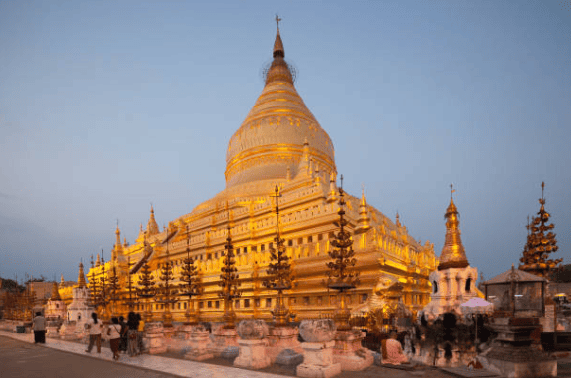
By early morning, I arrived in Bagan after a nine-hour bus journey from Yangon. The Mingalar bus stopped at Bagan Shwe Pyi Highway Bus Terminal in Nyaung U. As passengers disembarked, taxi drivers crowded around offering their services. I didn’t respond to their offers immediately, taking a moment to gather myself and think clearly. Using the excuse of wanting to buy a return ticket to Yangon, I politely declined their services.
I entered the Mingalar bus counter, sat for a bit, and inquired about tickets back to Yangon. They were selling tickets for departures in the coming days, so I bought mine right away since I was only staying in Bagan for two days before returning to Yangon. The ticket cost just 13,000 Kyat, significantly cheaper than the 19,000 Kyat I paid in Yangon for the same bus operator, which I had booked through my hostel there.
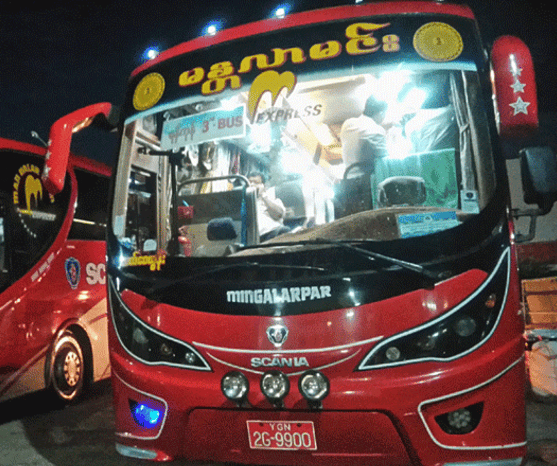
After securing my return ticket, I stayed at the bus counter to wait for daylight. Taxi drivers approached me several times, offering their services at relatively high prices. After some negotiation, one finally agreed to take me to Nyaung U for 5,000 Kyat. Interestingly, taxi fares are actually fixed here, so bargaining isn’t necessary. The fare to New Bagan is 7,000 Kyat, and to Old Bagan, it’s 8,000 Kyat.
The accommodation I had booked was in Nyaung U, outside the Old Bagan area, but a popular spot for tourists along with New Bagan. As the sun began to rise, the taxi driver took me through narrow, quiet village roads. Though ancient, Bagan feels more like a large village than a city. My guesthouse was in a truly rural area.
When entering the Bagan Archaeological Zone, the taxi stopped at a checkpoint where a staff member approached. Every tourist entering the zone must pay $25 USD, granting access to the entire archaeological zone for several days. The zone centers around Old Bagan, but New Bagan and Nyaung U are also included.
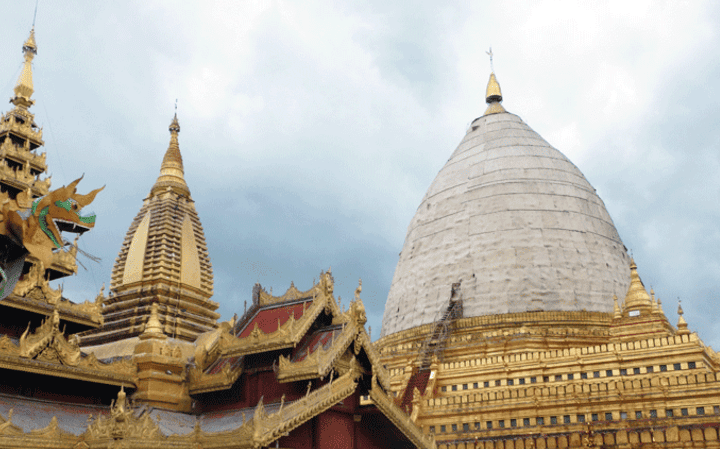
Bagan is an ancient city in Myanmar’s Mandalay Region, about 700 kilometers from Yangon, spanning 104 square kilometers. From the 9th to the 13th century, it was the capital of the Pagan Kingdom. Between the 11th and 13th centuries, the kingdom constructed over 10,000 temples, pagodas, and monasteries. Today, only 2,200 of these remain, drawing visitors from around the world.
In Nyaung U, I stayed at Shwe Nadi Guesthouse, which I booked via Booking.com. The rate for a single room was 172,000 IDR per night, including breakfast. Since I arrived very early, I couldn’t check in immediately, but the receptionist allowed me to wait in the lobby. After a short while, the receptionist offered me an early check-in for an additional $20 for the total stay. Exhausted and in need of rest, I accepted the offer. The room turned out to be comfortable, and I immediately fell asleep.
I woke up past noon, feeling hungry. After freshening up, I went out to find food nearby. Finding a decent place to eat was a bit challenging, but I eventually stopped at a busy stall with tourists. I ordered seafood fried rice, which came with complimentary soup. While it didn’t taste as good as the fried rice in Indonesia or Thailand, I finished it, likely because I was starving. With no plans for the afternoon, I remembered a large pagoda nearby—the Shwezigon Pagoda—and decided to visit on foot.
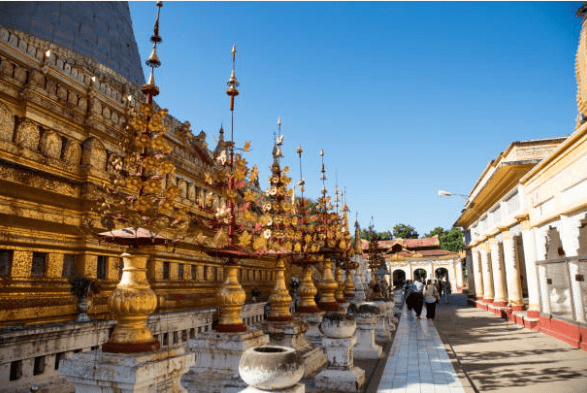
The walk turned out to be longer than expected, about a kilometer. Dust flew up every time a vehicle passed by. From afar, I could see the golden peak of the stupa. There were several entrances, and I followed the locals carrying their sandals. Visitors must remove footwear to enter the pagoda. Locals wore sarongs, while I had on shorts. Feeling unsure at first, I noticed other tourists wearing shorts and confidently entered the pagoda, completed in 1102 AD.
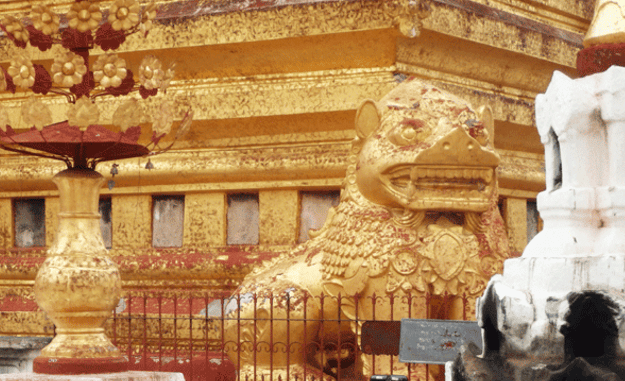
The Shwezigon Pagoda is one of the oldest in Bagan and among its most iconic monuments. Its shape and golden color, gleaming in sunlight, inspired the design of many pagodas across Myanmar for centuries. Slightly smaller than the Shwedagon Pagoda in Yangon, it’s breathtakingly beautiful. I circled it several times, captivated by its grandeur, passing by locals kneeling in prayer or taking photos after their prayers.
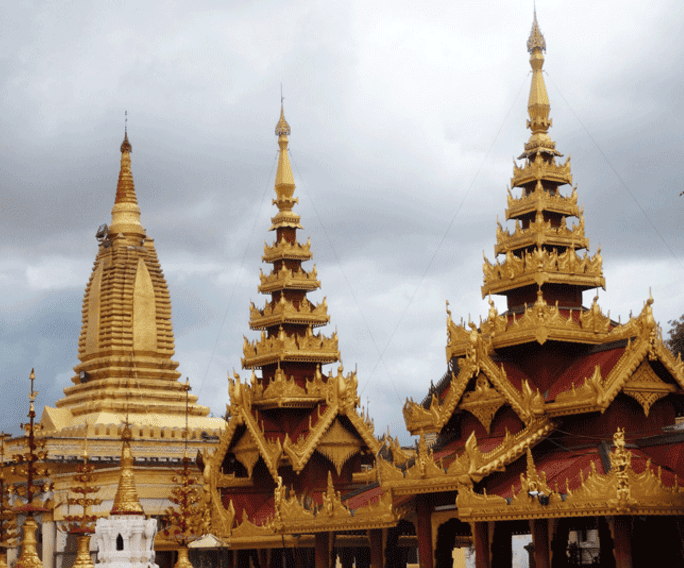
As evening approached, rain began to fall, and visitors sought shelter in the temple structures. While waiting for the rain to stop, I admired the intricate decorations and ornaments of the buildings. It took a while for the rain to cease, and by the time it did, night had fallen. I returned to the hostel on slightly muddy roads, where I stayed in for the rest of the night. Bagan truly feels like a serene village with little to do after dark.
